Resources
About Us
HVAC Noise Reduction Equipment & Materials Market Size, Share & Forecast 2025-2035 | Growth Analysis by Service Type, System Type, End-User & Geography
Report ID: MREP - 1041531 Pages: 280 Jul-2025 Formats*: PDF Category: Energy and Power Delivery: 24 to 72 Hours Download Free Sample ReportHVAC noise reduction equipment & materials help improve comfort, meet building code requirements, and enhance productivity in noise-sensitive environments. Factors such as rising awareness about the adverse health effects of noise pollution, strict noise control regulations & building codes, increasing demand for green building certifications, the adoption of high-performance HVAC systems, and growth in commercial and industrial construction are driving the growth of this market. However, high initial costs, space challenges in existing building retrofits, and the complexity of custom acoustic design and installation are limiting the growth of this market to a certain extent.
On the other hand, the growing number of healthcare & educational facilities, development of smart noise control systems, urbanization in emerging markets, integration with building automation & IoT systems, and growing demand for sustainable & recyclable acoustic materials are some of the opportunities expected to drive the growth of this market. Trends such as the adoption of advanced composite materials, the use of nanotechnology and modular & prefabricated acoustic solutions, and the integration of active noise control technology are gaining prominence in this market.
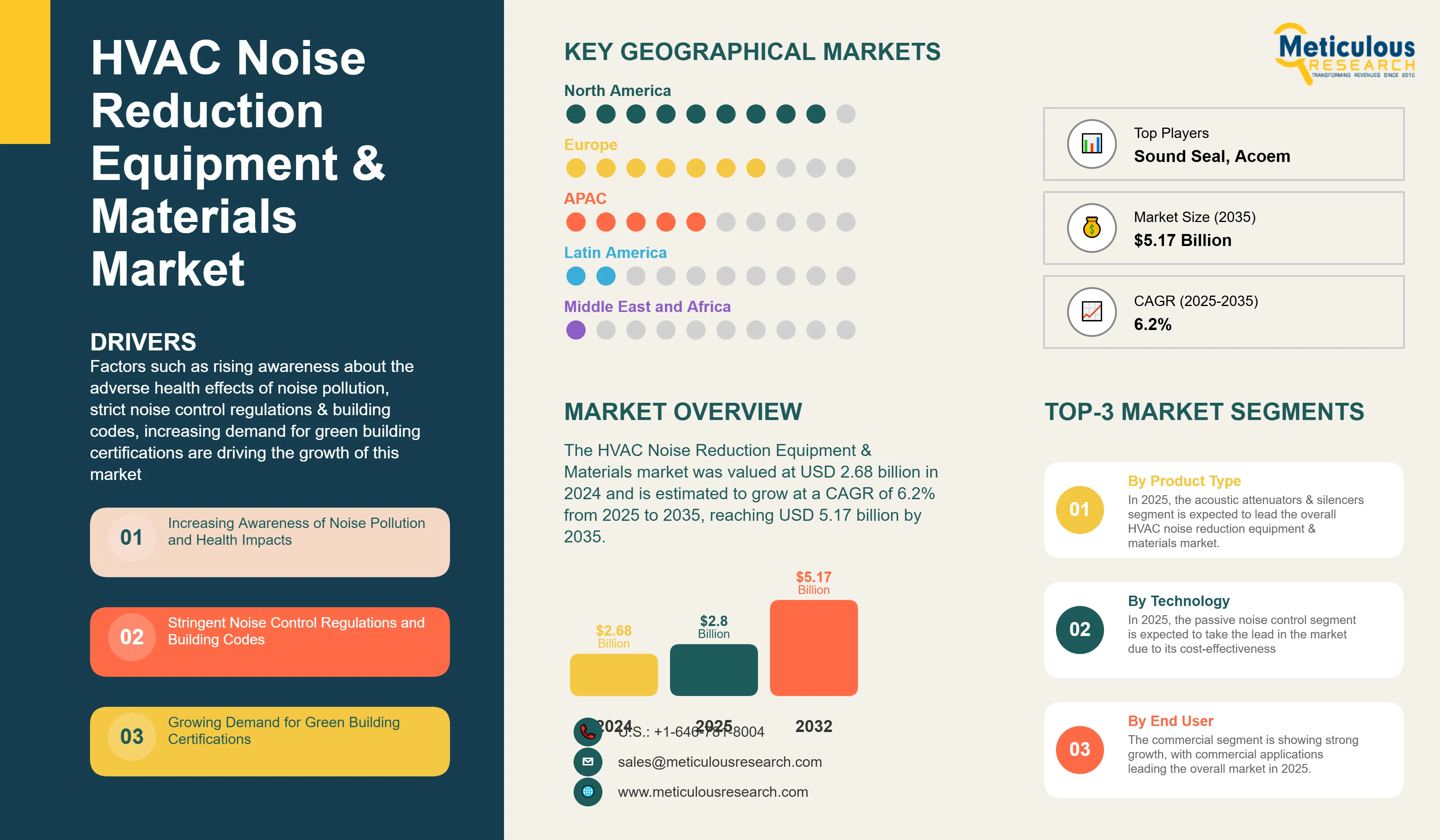
Market Drivers
Increasing Awareness of Noise Pollution and Health Impacts
Around 1.1 billion young people worldwide are at risk of hearing loss due to unsafe noise exposure (WHO, 2022). Environmental noise leads to an estimated 12,000 premature deaths and 48,000 new heart disease cases annually in Europe (European Environment Agency, 2022). The demand for HVAC noise reduction equipment & materials is growing rapidly as more people become aware of the harmful effects of noise pollution on health and productivity. Building occupants are now demanding advanced acoustic solutions, sophisticated noise control systems, and high-performance sound attenuation equipment. Building owners and facility managers are focusing on creating quieter and more comfortable indoor environments.
The rise of wellness-focused building design and increased awareness about how noise affects sleep quality, concentration, and overall health are driving this trend. Premium noise control solutions, which include advanced acoustic materials, active noise cancellation technologies, and custom acoustic designs, attract building owners who prioritize occupant comfort and health.
The green building movement has gained significant momentum in recent years. Architects and engineers are increasingly demanding noise control solutions that support sustainability goals while meeting modern acoustic comfort standards.
Stringent Noise Control Regulations and Building Codes
Stringent noise control regulations and building codes play a vital role in minimizing noise pollution from HVAC systems and other sources. By implementing these regulations and adopting effective noise control strategies, buildings can be designed and operated to provide a quieter and more comfortable environment for occupants and minimize negative impacts on the surrounding community. Building codes and standards, like those referencing ASHRAE 189.1, specify maximum permissible noise levels for HVAC equipment to prevent excessive noise transmission within and outside buildings. In addition, building codes, like Part E in the UK, focus on sound insulation to minimize noise transmission between units in multi-occupancy buildings and from external sources. This often involves specifying minimum sound transmission class (STC) ratings for walls and floors. Local authorities and regulatory bodies are responsible for enforcing noise regulations and ensuring compliance. This may involve monitoring noise levels, investigating complaints, and taking enforcement actions when necessary.
Growing Demand for Green Building Certifications
Green building certifications like LEED and BREEAM have seen increased uptake in recent decades as sustainability becomes a central focus in architecture and construction. According to the U.S. Green Building Council, as of 2024, there are over 110,000 LEED-certified projects globally, covering more than 19 billion square feet of building space. Similarly, BREEAM has certified over 565,000 buildings across more than 80 countries. These certifications emphasize not only energy and water savings but also indoor environmental quality, including noise reduction, which is critical for occupant comfort and productivity. As governments and industries push for greener construction practices, achieving such certifications is becoming a key priority in architecture, engineering, and real estate development.
The green building market is fueled by expanding corporate commitments to sustainability, increasing regulatory demands for environmental performance, a heightened focus on occupant health and wellness, and a stronger emphasis on energy-efficient building operations. HVAC noise reduction equipment is recognized as vital building infrastructure with various environmental benefits, positioning it to capture a significant share of this expanding market.
Market Segmentation Analysis
By Product Type
Based on product type, the HVAC noise reduction equipment & materials market is segmented into acoustic attenuators & silencers; acoustic panels & barriers; vibration isolation equipment; flexible connectors & expansion joints; acoustic louvers & grilles; duct liners & wraps; equipment enclosures & screens; and others. In 2025, the acoustic attenuators & silencers segment is expected to lead the overall HVAC noise reduction equipment & materials market. This segment dominates mainly due to its vital role in controlling ductwork noise, its common use in different HVAC systems, and its important contribution to meeting acoustic performance standards.
The vibration isolation equipment segment is forecasted to experience the highest growth rate during the period from 2025 to 2035. This growth is fueled by a growing focus on controlling equipment-generated vibrations, heightened awareness of structure-borne noise, increasing use of sensitive equipment in data centers and healthcare, and a growing demand for precise vibration control solutions.
The acoustic panels and barriers segment is also growing quickly because of a greater focus on room acoustics, the rise of open office designs, and a demand for flexible acoustic solutions.
By Technology
Based on technology, the HVAC noise reduction equipment & materials market is segmented into passive noise control, active noise control, and hybrid noise control systems. In 2025, the passive noise control segment is expected to take the lead in the market due to its cost-effectiveness, reliability, broad applicability in different HVAC contexts, and proven performance.
On the other hand, the active noise control segment is anticipated to grow at the highest CAGR during the forecast period. This growth is primarily driven by advancements in digital signal processing, increasing interest in adaptive noise control solutions, greater adoption in high-performance environments, and rising integration with smart building systems.
By End User
Based on end user, the HVAC noise reduction equipment & materials market is segmented into commercial, industrial, and residential categories. The commercial segment is showing strong growth, with commercial applications leading the overall market in 2025. This growth is linked to strict acoustic requirements in office buildings, healthcare facilities, and educational institutions, as well as a focus on occupant comfort and productivity.
By Application
Based on application, the HVAC noise reduction equipment & materials market is segmented into ductwork noise control, equipment noise control, room acoustics, and outdoor equipment noise control. In 2025, the ductwork noise control segment is expected to dominate the HVAC noise reduction equipment & materials market.
The equipment noise control segment is projected to witness the highest growth rate during the forecast period from 2025 to 2035. This is driven by the increasing installation of high-capacity HVAC equipment, growing focus on controlling equipment-generated noise, and rising demand for enclosure solutions.
Regional Analysis
Geographically, the HVAC noise reduction equipment & materials market is divided into North America, Europe, Asia-Pacific, Latin America, and the Middle East & Africa. In 2025, North America is expected to hold the largest share of the HVAC noise reduction equipment & materials market. This is due to the region's strict building codes, a well-established construction industry, and high awareness of acoustic comfort needs.
North America is set to record a strong growth rate during the period from 2025 to 2035. This growth will be supported by ongoing construction projects, a focus on workplace wellness, increasing healthcare facilities, and rising demand for sustainable building solutions. North America's leadership in HVAC noise reduction equipment is bolstered by the presence of major HVAC manufacturers, established acoustic solution providers, and a stringent regulatory framework that supports noise control standards.
Europe is the second-largest market, driven by stringent environmental laws, a focus on energy-efficient buildings, growing green building initiatives, and the presence of leading acoustic technology manufacturers. The region's commitment to sustainability and occupant well-being significantly boosts market growth.
Asia-Pacific is emerging as the fastest-growing region for HVAC noise reduction equipment, driven by rapid urbanization in countries like China, India, and Japan, increasing construction activity, heightened awareness of noise pollution, and expanding industrial development that requires noise control solutions.
Competitive Landscape
The HVAC noise reduction equipment & materials market features a mix of specialized acoustic solution manufacturers, HVAC equipment manufacturers with acoustic divisions, and engineering consultants providing custom acoustic designs. Leading companies in the global HVAC noise reduction equipment & materials market include Sound Seal Inc., Kinetics Noise Control Inc., Mason Industries Inc., Acoem Group, Ruskin Company (Johnson Controls International plc), Lindab AB, Owens Corning, Johns Manville Corporation, Rockwool International A/S, Armacell International S.A., 3M Company, Saint-Gobain ISOVER, Paroc Group Oy, Trane Technologies plc, and Carrier Global Corporation, among others. These companies are focusing on strategies like developing advanced materials, integrating smart noise control technology, designing modular products, offering custom solutions, and partnering with HVAC manufacturers to strengthen their market position.
|
Particulars |
Details |
|
Number of Pages |
280 |
|
Format |
PDF & Excel |
|
Forecast Period |
2025–2035 |
|
Base Year |
2024 |
|
CAGR (Value) |
6.2% |
|
Market Size (Value)in 2025 |
USD 2.82 Billion |
|
Market Size (Value) in 2035 |
USD 5.17 Billion |
|
Segments Covered |
By Product Type
By Technology
By Material Type
By Application
By Installation Type
By End User
|
|
Countries Covered |
North America (U.S., Canada) |
|
Key Companies |
Sound Seal Inc., Kinetics Noise Control Inc., Mason Industries Inc., Acoem Group, Ruskin Company (Johnson Controls International plc), Lindab AB, Owens Corning, Johns Manville Corporation, Rockwool International A/S, Armacell International S.A., 3M Company, Saint-Gobain ISOVER, Paroc Group Oy, Trane Technologies plc, Carrier Global Corporation. |
The HVAC noise reduction equipment & materials market is projected to reach USD 5.17 billion by 2035 from USD 2.82 billion in 2025, at a CAGR of 6.2% during the forecast period.
In 2025, the acoustic attenuators and silencers segment is projected to hold the major share of the HVAC noise reduction equipment & materials market.
The equipment noise control segment is slated to record the highest growth rate during the forecast period of 2025-2035.
Key factors driving the growth include increasing awareness of noise pollution and health impacts, stringent noise control regulations, growing demand for green building certifications, rising adoption of high-performance HVAC systems, and expanding construction activities.
Major opportunities include growing healthcare & educational facility construction, development of smart & adaptive noise control systems, emerging markets, and rising demand for sustainable acoustic materials.
North America leads the market with the highest share, while Asia-Pacific is projected to record the highest growth rate during the forecast period, offering significant opportunities for noise control equipment suppliers.
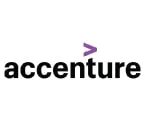

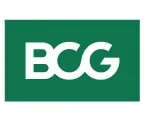
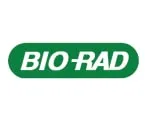
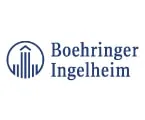
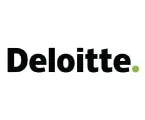
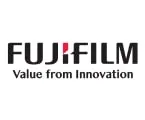
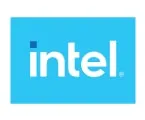
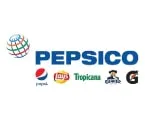
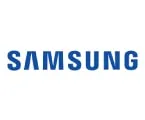
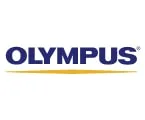
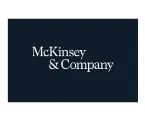
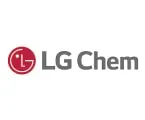
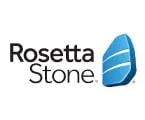
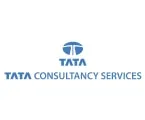

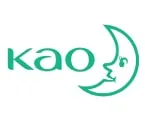
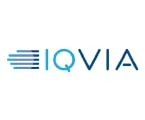
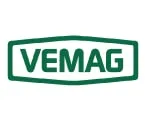
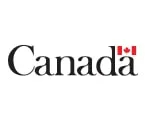

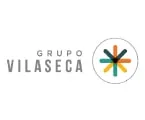
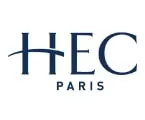
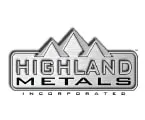
Published Date: Oct-2025
Published Date: Oct-2025
Published Date: Oct-2025
Published Date: Oct-2025
Published Date: Sep-2025
Please enter your corporate email id here to view sample report.
Subscribe to get the latest industry updates